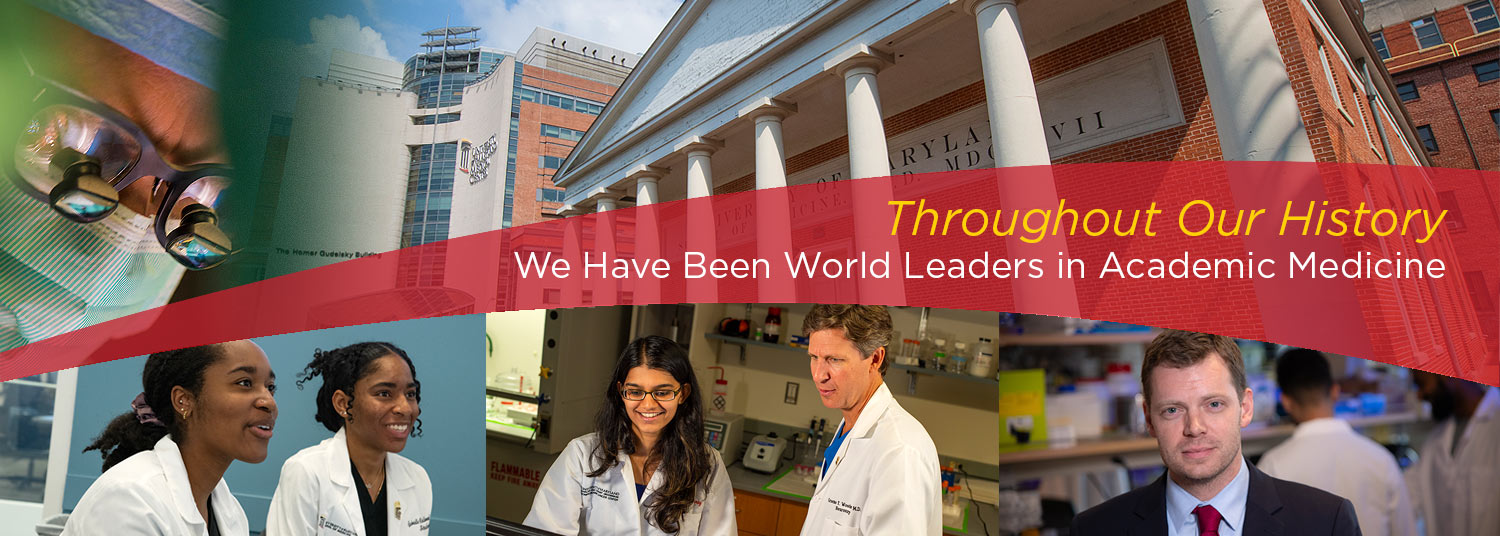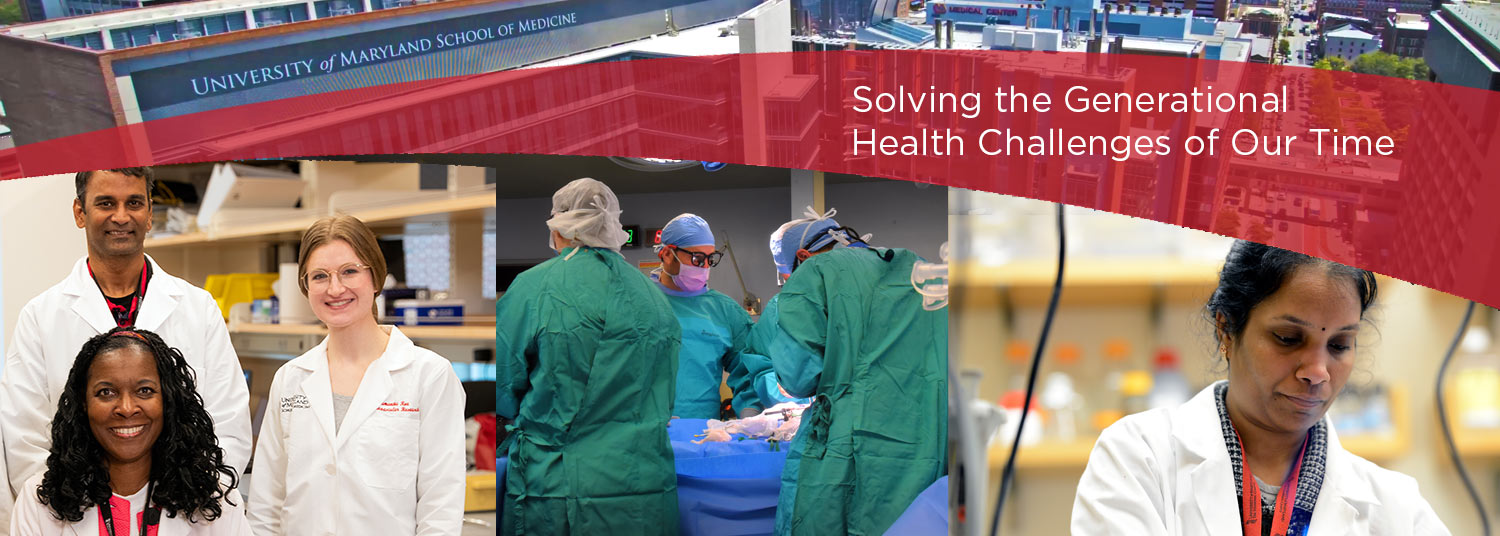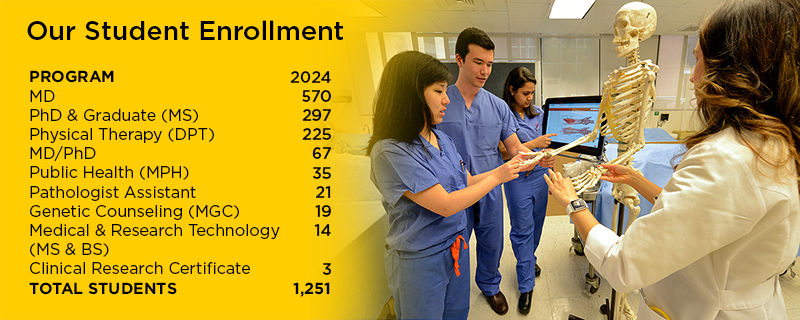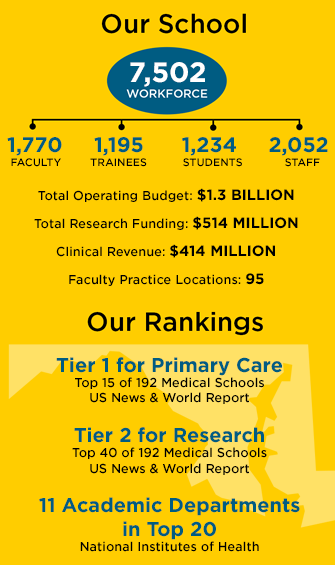 A Place of Discovery, Caring, and Learning
A Place of Discovery, Caring, and Learning
Chartered in 1807 as the first public medical school in the United States, the University of Maryland School of Medicine is into its third century – training the next generation of physicians, scientists, and health professionals, providing compassionate clinical care, and conducting advanced biomedical research to solve the generational health challenges of our time.
Throughout our history, we have been innovative leaders in academic medicine. We were the first US public medical school to open a teaching hospital in 1823, and we were the first to establish shock trauma as a medical field.
We developed aromatase inhibitor drugs as a groundbreaking breast cancer treatment in 1982, performed the most comprehensive total face transplant surgery in 2012, and played a critical role in the development and testing of the major COVID-19 vaccines.
Today, we continue to build on generations of discoveries to advance new therapies and techniques, including, in 2022, the first ever pig to human heart transplant.
More than ever, our innovative skills are needed to solve the complex individual and global health diseases and health inequities faced by millions across the nation.
Our faculty, staff, residents, trainees, and students are dedicated to leadership and social responsibility across our four mission areas: Education. Research, Patient Care, and Community.
Read about our Mission and Vision.
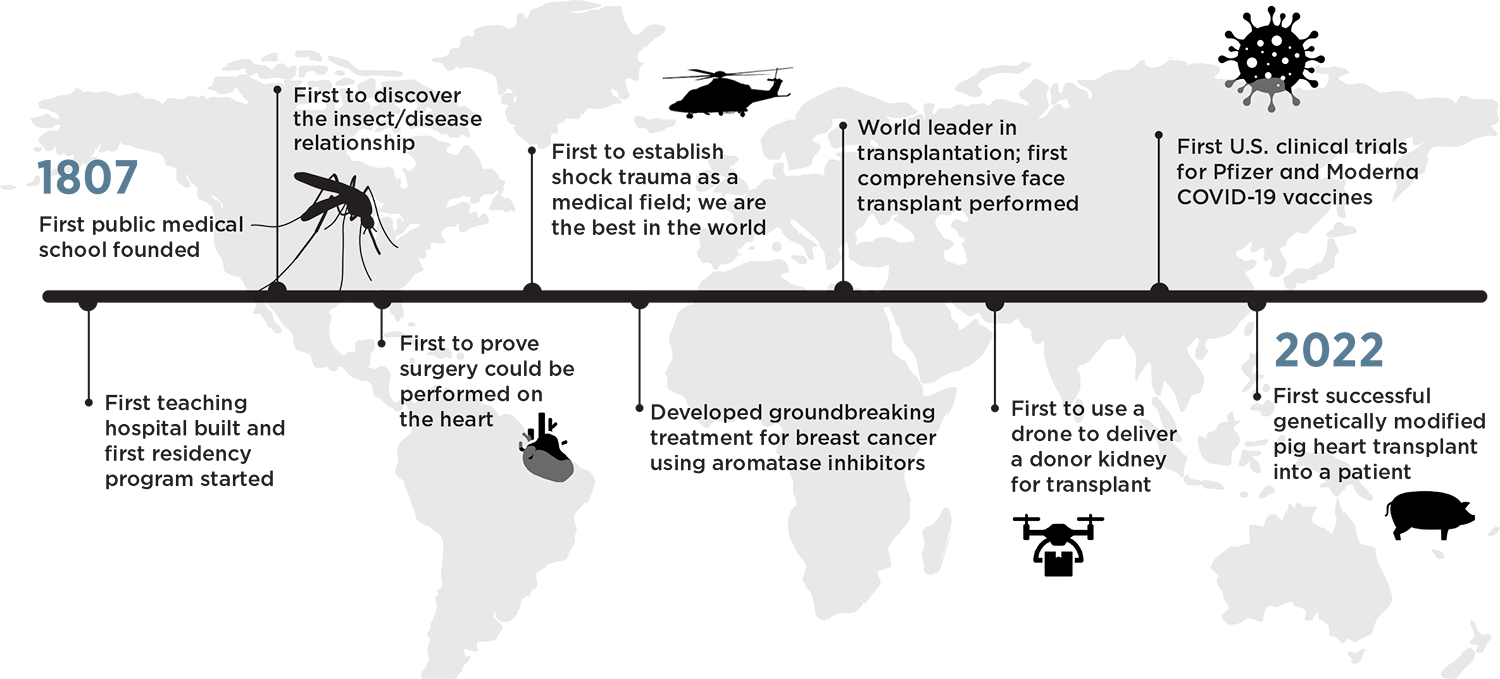
A Renaissance in Medical Education
In state-of-the-art learning facilities and laboratories on the University of Maryland, Baltimore campus, we educate more than 1,200 medical students, graduate students, and research trainees every year. In partnership with the University of Maryland Medical Center, we provide residency and fellowship training in more than 30 specialties.
Acceptance to the School of Medicine’s MD program is highly competitive, with more than 6,000 applicants for 160 positions in each class. In 2024, the average MD applicant had a GPA of 3.83, and an MCAT score above the 86th percentile.
Our medical student body is talented and diverse: 28% of students are underrepresented minorities. 59% are women, 67% are students of color, and 20% are members of the LGBTQ community.
Offering an integrated medical curriculum, launched in 2020 as its new “Renaissance Curriculum,” the school places students in more clinical interactions with patients and provides the flexibility to craft experiences important for their choice of specialty. With an emphasis on service learning and community engagement, the school of medicine matriculates “renaissance” physicians possessing the humanism, leadership, and clinical skills necessary to help their patients thrive.
Broad Graduate Education & Allied Health Training
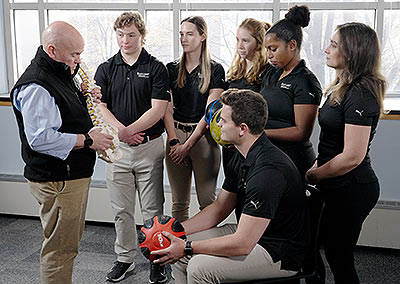 The School of Medicine also offers a wide range of graduate programs. Through the Graduate Program in Life Sciences (GPILS), we offer cutting-edge translational research training in basic, biomedical, clinical, and population sciences.
The School of Medicine also offers a wide range of graduate programs. Through the Graduate Program in Life Sciences (GPILS), we offer cutting-edge translational research training in basic, biomedical, clinical, and population sciences.
Our graduate programs cover the entire range of biomedical research and life sciences including the basics of protein structure and molecular biology, integrative systems physiology, virology, vaccine development, behavior, cognition, population-based genetics, and the impact of the environment on human health.
We also train students for professions in allied health fields, with degree granting programs in Physical Therapy, Pathology, and Medical Research Technology.
In Partnership with a Major Academic Medical Center
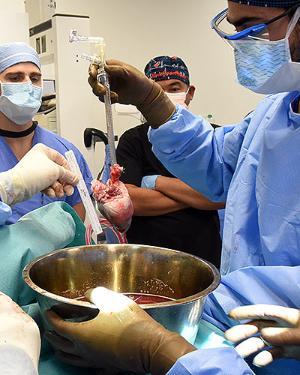 Faculty doctors treat patients at the University of Maryland Medical Center – one of the nation's first teaching hospitals – and at clinical practice locations throughout the state. Inpatient and outpatient visits totaled 2 million in 2024.
Faculty doctors treat patients at the University of Maryland Medical Center – one of the nation's first teaching hospitals – and at clinical practice locations throughout the state. Inpatient and outpatient visits totaled 2 million in 2024.
The University of Maryland is known for pioneering new treatments in our many areas of strength, which include transplant science, infectious disease, cancer care, and shock trauma.
Faculty oncologists provide cutting edge cancer treatments and life-saving clinical trials at the University of Maryland Marlene & Stewart Greenebaum Comprehensive Cancer Center, one of only 57 NIH-designated comprehensive cancer centers in the U.S.
Our doctors treat the critically sick and severely injured at the R Adams Cowley Shock Trauma Center, the nation's first and only integrated trauma hospital, where groundbreaking research and innovative medical procedures save thousands of lives every year.
Other important areas of clinical strength include radiation oncology, focused ultrasound, orthopaedic trauma, population health, genomics, and cardiology.
Discovery-Based Medicine
 The research vision of the School of Medicine is to build on generations of discoveries to advance new therapies and cures with the highest level of impact on human health in the region, the nation, and around the world.
The research vision of the School of Medicine is to build on generations of discoveries to advance new therapies and cures with the highest level of impact on human health in the region, the nation, and around the world.
Our laboratory scientists bring their discoveries to the bedside faster than ever before, testing them in life saving clinical trials and through groundbreaking experimental treatments, such as the first ever pig to human heart transplant.
During the COVID-19 pandemic, the School of Medicine’s Center for Vaccine Development and Global Health became the first in the U.S. to test the first-generation of COVID-19 vaccines, while the School’s Institute for Genome Sciences performed hundreds of thousands of genome sequencing tests on COVID samples sent from across the state.

With an operating budget of $1.3 billion, the School of Medicine directs more than $500 million annually to developing solutions to the most challenging and complex diseases. We are ranked 13th among all public medical schools for total research grants & contracts reported by the Association of American Medical Colleges (AAMC). Philanthropy plays an important role in supporting our research endeavors and we greatly appreciate that support.
Focusing on Generational Challenges
Under the leadership of Mark T. Gladwin, MD, the John Z. and Akiko K. Bowers Distinguished Professor and Dean, University of Maryland School of Medicine, and Vice President for Medical Affairs, University of Maryland, Baltimore, the School of Medicine is dedicated to tackling the most difficult and prevalent health problems of our time.
These generational challenges will define the greatest clinical and population health needs for decades to come and drive research efforts across the School of Medicine’s 25 departments, 5 institutes and 10 research centers.
The Generational Health Challenges of Our Time
Our immediate task is to change the course of these generational health challenges impacting communities across Maryland right now.
Obesity and Metabolic Syndrome
Approximately one in four Maryland youth is overweight or obese.
An Aging Population
By 2040, nearly one-quarter of Maryland’s population will be age 60 or older.
Emerging Pathogens and Climate Medicine
Three out of four new emerging infectious diseases are zoonotic.
Mental Health and Addiction
Maryland’s overdose death rate is 50% higher than the national average.
Health Inequity and Health Disparities
A black baby born in Maryland is 2.5 times more likely to die than a white baby.
Brain Diseases and Neurodegeneration
Over 100,000 Marylanders age 65 or older have Alzheimer’s disease.
Big Data Computation
AI tools can level the playing field to help highlight and erase inequities in health.
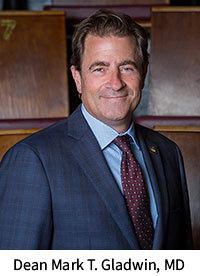 Research Institutes and Centers
Research Institutes and Centers
In his first year as Dean, Dr. Gladwin launched three institutes to begin addressing these generational health challenges.
- The Kahlert Institute for Addiction Medicine is advancing basic science and clinical care, aiming to overcome addiction and stem the tide of drug and alcohol overdoses in Maryland and beyond.
- The Institute for Health Computing uses cutting-edge information technology to find new patterns in biomedical data to power the discovery of novel drugs and therapies and reduce inequality in healthcare access and outcomes.
- The University of Maryland Medicine Institute for Neuroscience Discovery researches traumatic brain injury, neuropsychiatric disorders, and neurodegenerative disorders
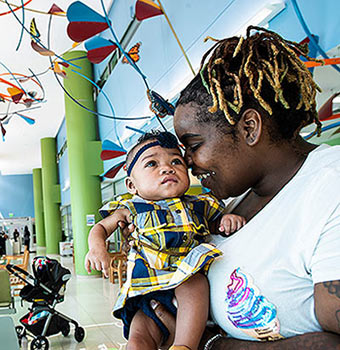 Commitment to the Community
Commitment to the Community
The University of Maryland School of Medicine is an anchor institution of the West Baltimore community, and the school is committed to improving the health, quality of life, and prosperity of its neighbors.
We offer community outreach programs such as Mini-Med School, a series of tuition-free classes designed to help Baltimore residents improve their health and well-being.
Community engagement is also part of the MD program curriculum, which includes a service learning requirement. Medical students mentor students in Baltimore City schools among other forms of service, ensuring the next generation of clinicians deepen their understanding of complex societal problems and their impact on health and patient care.

